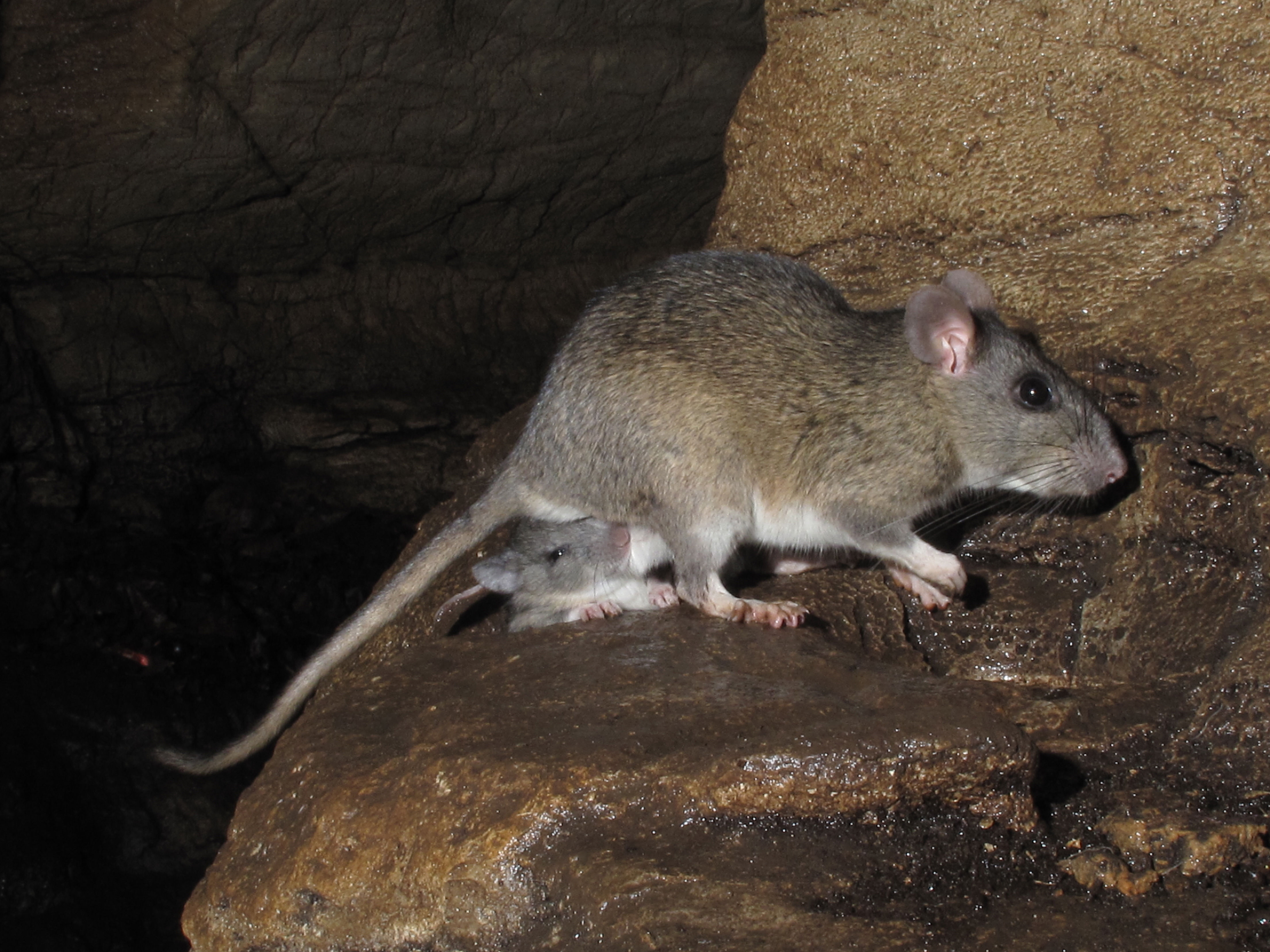Allegheny woodrat
(Neotoma magister)

Description
The Allegheny woodrat (Neotoma magister), is a species of "pack rat" in the genus Neotoma. Once believed to be a subspecies of the eastern woodrat (Neotoma floridana), extensive DNA analysis has proven it to be a distinct species. The Allegheny woodrat is a medium-sized rodent almost indistinguishable from the closely related eastern woodrat, although slightly larger on average, and often with longer whiskers. Adults typically range from 31 to 45 cm (12 to 18 in) in total length, including a tail measuring 15 to 21 cm (5.9 to 8.3 in). Males weigh 357 g (12.6 oz) on average, while females are slightly smaller, weighing an average of 337 g (11.9 oz). It is the second-largest member of the native North American rats, and can weigh up to a pound, roughly the size of an eastern gray squirrel. The fur is long, soft, and brownish-gray or cinnamon in color, while the undersides and feet are white. They have large eyes, and naked ears. Their most distinguishing feature is their tails: while the tails of European rats are naked with only slightly visible hairs, the tails of woodrats are completely furred with hairs about one-third of an inch long, and predominantly black above and white beneath. The whiskers are unusually long, typically over 5 cm (2 in) in length. About 50 whiskers are found on each side, consisting of a mixture of stiff black hairs and softer white ones. Allegheny woodrats prefer rocky outcrops associated with mountain ridges such as cliffs, caves, talus slopes, and even mines. This is mostly true for Pennsylvania and Maryland. In Virginia and West Virginia, woodrats are found on ridges, but also on side slopes in caves and talus (boulders and breakdown) fields. The surrounding forest is usually deciduous. Throughout their range, they are found in mixed pine-oak forest, but they are also found in a range of other forest types, most commonly with a mix of hardwood trees. Their diets primarily consist of plant materials including buds, leaves, stems, fruits, seeds, acorns, and other nuts. They store their food in caches and eat about 5% of their body weight a day. Predators include owls, skunks, weasels, foxes, raccoons, bobcats, large snakes, and humans. At one point, the Allegheny rat was hunted for food and sometimes killed due to false identification based on its resemblance to more problematic European rats.
Taxonomic tree:







